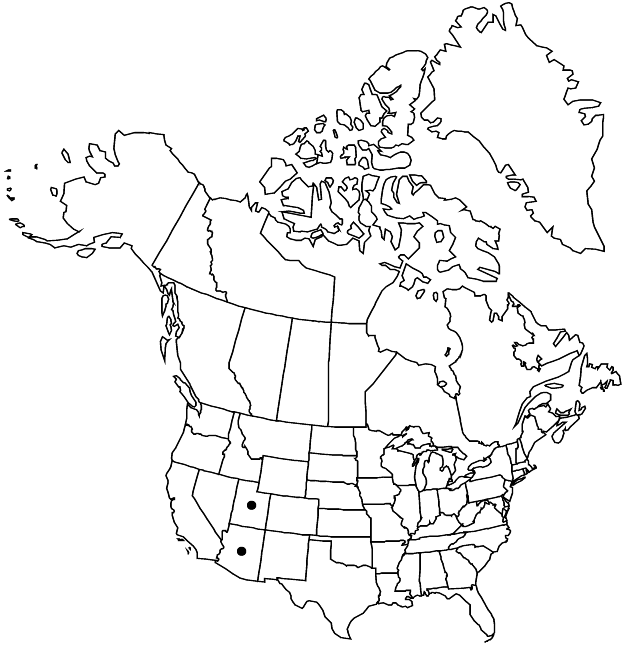Difference between revisions of "Eriogonum leptocladon var. leptocladon"
FNA>Volume Importer |
FNA>Volume Importer |
||
| Line 47: | Line 47: | ||
|publication year= | |publication year= | ||
|special status= | |special status= | ||
| − | |source xml=https://jpend@bitbucket.org/aafc-mbb/fna-data-curation.git/src/ | + | |source xml=https://jpend@bitbucket.org/aafc-mbb/fna-data-curation.git/src/8f726806613d60c220dc4493de13607dd3150896/coarse_grained_fna_xml/V5/V5_465.xml |
|subfamily=Polygonaceae subfam. Eriogonoideae | |subfamily=Polygonaceae subfam. Eriogonoideae | ||
|genus=Eriogonum | |genus=Eriogonum | ||
Revision as of 17:39, 18 September 2019
Plants 4–12 × 5–20 dm. Aerial flowering stems floccose to glabrate. Leaves: blade linear-lanceolate to linear-oblanceolate, 1.5–4 × 0.2–0.4 cm, margins plane. Inflorescence branches thinly floccose to glabrate, rarely white-tomentose. Perianths pale yellow to yellow.
Phenology: Flowering Jun–Oct.
Habitat: White or red blow sand on flats, washes and slopes, mixed grassland, saltbush, ephedra, and sagebrush communities, pinyon-juniper woodlands
Elevation: 1100-1900 m
Discussion
Variety leptocladon is much more common in Utah’s Emery, Garfield, Grand, and Wayne counties than is either of the other two varieties. It also occurs in San Juan County, but there it is restricted to portions of Canyonlands National Park, and is just inside the eastern edge of Sevier County. It is encountered also, albeit rarely, in Navajo County, Arizona. Variety leptocladon is worthy of cultivation, especially those expressions with densely white-tomentose inflorescence branches such as found in the Dolores Triangle area north of Ryan Creek in Grand County (e.g., Atwood & Welsh 23213, BRY).
Selected References
None.
